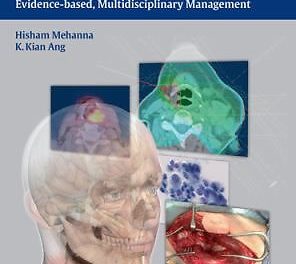Editors: Frederick O. Stephens, MD, and Karl Reinhard Aigner, MD
Publisher: Springer – 389 pages
Book Review by: Sonu Chandiram
This authoritative and comprehensive book on oncology – the study of cancer – was written for a worldwide audience with the following objectives, according to the editors:
- Cover basic, clinical, and scientific aspects of cancer
- Explain how and why people develop cancer
- Indicate how the body reacts to cancer
- Describe how cancer appears
- Outline principles of cancer prevention, investigation, diagnosis, and management
Ten people including the two editors, who are professors, physicians and researchers in cancer – from Australia, France, Germany, Japan, the United Kingdom, and the United States – wrote this extensive book that describes in detail what is cancer and provide information on several aspects as outlined above, covers many types of cancer. It consists of 24 chapters which we name below to provide you its overview:
- Part I – The Cancer Problem
- What Is Malignancy?
- Epidemiology
- Summary of Practical Measures to Prevent Cancer
- Part II – General Features of Cancer-Presentation and Management
- Symptoms of Cancer: Local and General
- Signs of Cancer: Local and General
- Clinico-Pathology of Cancers
- Investigations That May Be Useful in Detecting Cancers
- Treating Cancer
- Relationship Between Patients, Their Doctors, and the Healthcare Team
- Part III – Most Common Cancers
- Skin Cancers
- Lung Cancer (Bronchogenic Cancer)
- Cancer of the Breast: An Overview
- Cancer of the Digestive System (Alimentary Tract)
- Head and Neck Cancers
- Cancers of Female Genital Organs
- Cancers of Male Genital Organs
- Cancers of Bladder and Kidneys
- Cancers of the Brain and Nervous SystemThe Leukemias and Lymphomas
- Soft Tissue Sarcomas
- Malignant Tumors of Bone and Cartilage
- Metastatic (Secondary) Cancer
- Making Progress
- Techniques and Evidence of Progress
- Future Directions
Cells develop, grow, die, and are replaced by new cells in our bodies in ways controlled by the genes in the DNA of the cell nucleus. The genes determine the characteristics we inherit from our parents such as our height, weight, skin complexion, the color of our eyes and hair, and numerous other factors.
This process of cell growth, division, death and replacement goes on in remarkably well-balanced ways. The cells are of similar size, shape, and color. And miraculously, cell division stops after body needs have been met.
But occasionally, cancer develops when this genetic control is damaged or lost in one or more cells, which divide and divide again, producing more and more abnormal cells that are of different sizes and shapes, and in clusters out of the norm.
These cells keep on dividing and are no longer controlled by genes. They go on dividing and cause damage to other tissues and body functions. This is cancer. All the known causes of cancer directly or indirectly damage normal genes that regulate normal cell division.
Two micrographs are shown on page 6 of chapter 1 of this book entitled What Is Malignancy? One is of normal breast cells, and the second is of cancer cells in the breast. You will note marked differences in the appearance of the cells in the two images.
Each chapter begins with: “In this chapter you will learn about…,” then a bullet-point list is provided. Major topics and subtopics are then discussed, interspersed with images and visuals: black-and-white and color photos, charts, diagrams, drawings, scans, tables x-rays, and other items.
An important point made in first chapter, as we think about the chances of developing cancer, is this: the longer we live, the more chance there is for the genes that regulate cell growth to become damaged. But do take note that cells do not get damaged by random chance. There are usually internal (e.g. hereditary) or external (e.g. environmental) factors that trigger damage to the genetic blueprint of our bodies: our unique DNA.
What factors contribute to contracting cancer? They are the following (most of which are within people’s control): alcohol abuse, atomic irradiation, bacteria, betel nut chewing, carcinogens, excessive sunshine, food habits and nutritional deficiencies, hormones, exposure to industrial irritants, pre-existing abnormalities, tobacco use, viruses, and x-rays in excessive doses.
To learn more about these factors that either increase or decrease your chances of developing cancer, we urged you to read chapter 2- Epidemiology – thoroughly.
Here, you will gather information and develop insight on who, what, when, where, how and why people are more (or less) prone to develop cancer, and what types of cancer. The Appendix also provides valuable data on what types of cancers are most (or least) prevalent in which regions or countries of the world.
In general, the data show that higher percentages of people develop cancer in the more developed regions of the world such as in Australia, Europe, and the United States, than in less developed areas such as in Asia and Africa.
For example, more (in some cases, five, four, three or two times as many) males in the more developed countries get cancers of almost all parts of the body, namely of the bladder, blood, bone marrow, brain, colon or rectum, larynx, lung, lymph gland, oral cavity, prostate gland, skin, stomach, testis, and thyroid gland, than people in the less developed countries.
The only exceptions were cancers of the esophagus and nasopharynx, wherein more males in less developed countries had contracted these cancers than in the more developed countries.
All these types of cancers are also more prevalent among females in more developed countries than in less developed countries. In addition, almost three times as many females had cancers of the breast and uterus, and twice as many had ovarian cancers in more developed countries as compared to their counterparts in less developed countries.
One reason cited for much lower incidence of cancer among people in less developed countries is: vegetarian diets.
Editors:
Frederick O. Stephens, AM, MD, MS, FRCS (Ed), FACS, FRCS works in the Department of Surgery at the University of Sydney, and at the Surgical Oncology / Melanoma Unit at The Royal Prince Alfred and Sydney Hospitals in Sydney, Australia.
Karl Reinhard Aigner, MD works in the Department of Surgical Oncology at Medias Klinikum GmbH & Co KG, in Burghausen, Germany.







